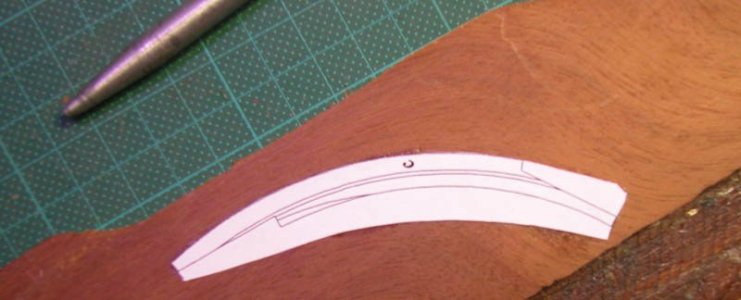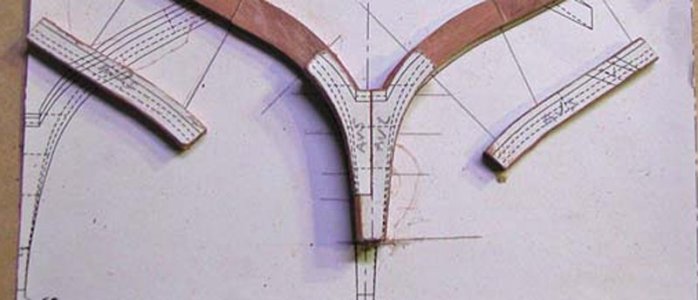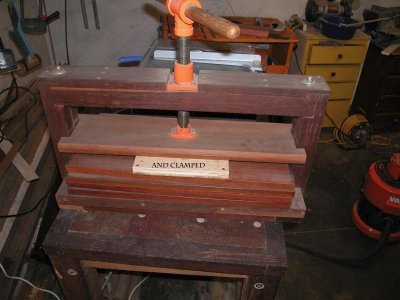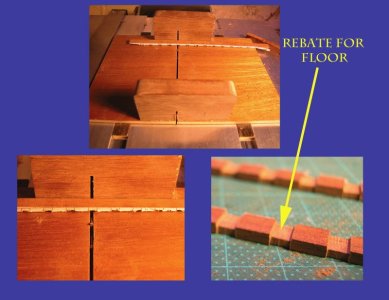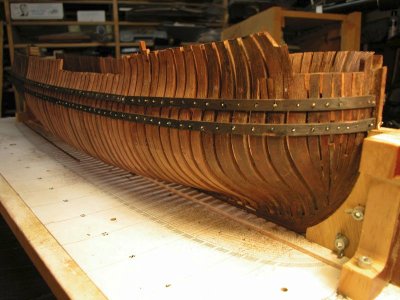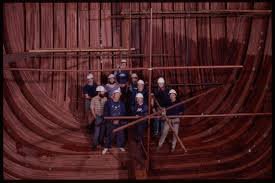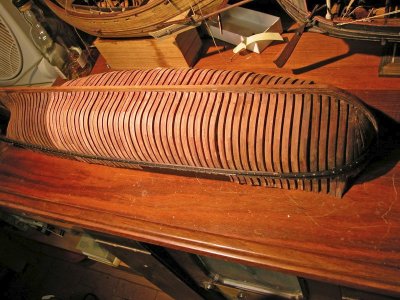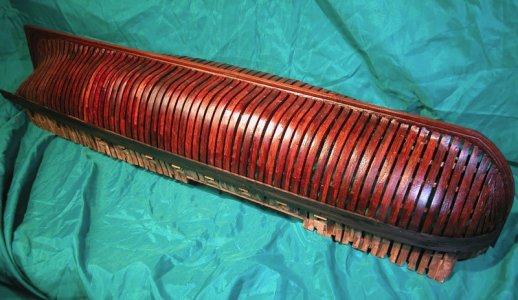As I am new to this site, I feel it is incumbent on me to contribute something. In consequence, I present an abbreviated log of my build of this historical ship.
It was in fact the transport ship (or gabare/flûte) provided for the Kerguelen expedition of 1771 to the Southern Ocean, under the command of M. de St. Alloüarn. Becoming separated from the expedition, the Gros Ventre (which means Fat Belly), proceeded to the arranged rendezvous at the south-western tip of the Great Southland, previously mapped after a fashion by the Dutch. Kerguelen having failed to attend the first rendezvous, the Gros Ventre sailed to Shark Bay on north western coast of the Southland, well known to the Dutch since 1616, where Dirck Hartog of the Eendracht left an inscribed pewter plate and fixed the latitude. Here officers of the Gros Ventre planted a document in a bottle with two french coins claiming the coast of the Southland for the french king Louis XV. This done, they sailed for Batavia, Timor, Mauritius and oblivion.
Le Gros Ventre ended its life as a hulk in 1779.
Plans for this ship (or at least its sister ship) have survived and have been worked into a lovely monograph in the Ancre series by Gerard Delacroix. I have used this monograph to build a fully framed "Admiralty style" hull model in jarrah (a very hardwood from Western Australia where I live) as it is a historically important but little known ship for Western Australia.
I commenced this in 2013, completed bow and stern framing and then put it aside for several years to complete other projects. Taking up the build again in 2021, I have completed framing and decking and am presently building the head of the ship. As a start, I show the building frame as well as the bow and stern framing. You will note the loading port in the larboard transom timbers used for loading of timber and spars. The temporary shiny appearance is due to orange oil which gradually darkens the red hue of jarrah.
Cheers
Dick
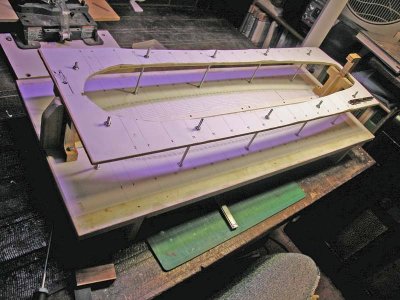

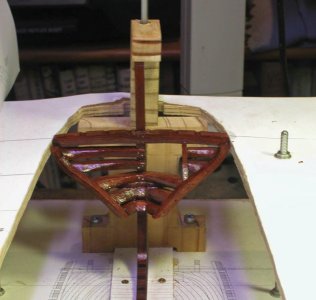
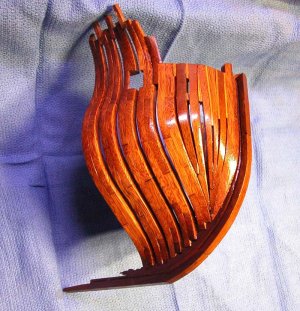

It was in fact the transport ship (or gabare/flûte) provided for the Kerguelen expedition of 1771 to the Southern Ocean, under the command of M. de St. Alloüarn. Becoming separated from the expedition, the Gros Ventre (which means Fat Belly), proceeded to the arranged rendezvous at the south-western tip of the Great Southland, previously mapped after a fashion by the Dutch. Kerguelen having failed to attend the first rendezvous, the Gros Ventre sailed to Shark Bay on north western coast of the Southland, well known to the Dutch since 1616, where Dirck Hartog of the Eendracht left an inscribed pewter plate and fixed the latitude. Here officers of the Gros Ventre planted a document in a bottle with two french coins claiming the coast of the Southland for the french king Louis XV. This done, they sailed for Batavia, Timor, Mauritius and oblivion.
Le Gros Ventre ended its life as a hulk in 1779.
Plans for this ship (or at least its sister ship) have survived and have been worked into a lovely monograph in the Ancre series by Gerard Delacroix. I have used this monograph to build a fully framed "Admiralty style" hull model in jarrah (a very hardwood from Western Australia where I live) as it is a historically important but little known ship for Western Australia.
I commenced this in 2013, completed bow and stern framing and then put it aside for several years to complete other projects. Taking up the build again in 2021, I have completed framing and decking and am presently building the head of the ship. As a start, I show the building frame as well as the bow and stern framing. You will note the loading port in the larboard transom timbers used for loading of timber and spars. The temporary shiny appearance is due to orange oil which gradually darkens the red hue of jarrah.
Cheers
Dick









